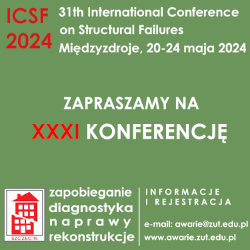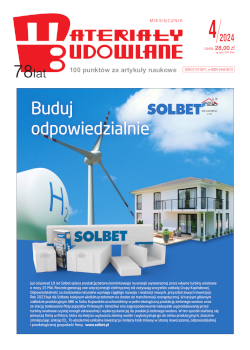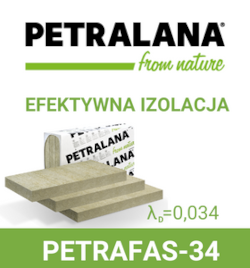mgr inż. Roman Milwicz Politechnika Poznańska,Wydział Budownictwa i Inżynierii Środowiska
dr hab. inż. Jerzy Pasławski, prof. Politechnika Poznańska,Wydział Budownictwa i Inżynierii Środowiska
mgr inż. Krzysztof Dębiński Politechnika Poznańska,Wydział Budownictwa i Inżynierii Środowiska
Autor do korespondencji e-mail : Ten adres pocztowy jest chroniony przed spamowaniem. Aby go zobaczyć, konieczne jest włączenie w przeglądarce obsługi JavaScript.
DOI: 10.15199/33.2016.06.79
Trudności prognozowania, zwłaszcza w przypadku relatywnie długiego cyklu życia obiektów budowlanych, nastręczają wielu problemów. W związku z tym w projektowaniu należy uwzględniać rozwiązania elastyczne, pozwalające na dostosowanie się do zmieniających się w czasie potrzeb i wymagań w celu redukcji kosztów, zmniejszenia zużycia energii, a także podniesienia komfortu użytkowania. W artykule przedstawiono analizę elastycznego doboru różnych systemów ogrzewania domu jednorodzinnego, działających w układach biwalentnych, wspomaganych odnawialnymi źródłami energii. Za pomocą analizy cyklu życia obiektu (LCC) oraz metody Monte Carlo oceniono różne scenariusze zmian cen energii. We wnioskach wykazano zasadność stosowania elastycznych rozwiązań w budownictwie.
Słowa kluczowe: koszty cyklu życia, LCC, elastyczność, Monte Carlo, symulacje.
* * *
Flexibility in the selection of energy sources on the example of heating a single family house
The difficulty in forecasting the future causes many problems, because of that, the design of objects should be based on flexible solutions that allow adjusting to needs during the time and requirements in order to reduce costs, energy consumption and improve user comfort. The paper presents the analysis of a flexible selection of different heating systems for single - family home, operating as bivalent systems, supported by renewable energy sources. The analysis refers to the life cycle (LCC) and uses a Monte Carlo method for different scenarios of changes in energy prices. Article demonstrates the legitimacy of the application of flexibility in civil engineering.
Keywords: Life Cycle Cost, LCC, flexibility, Monte Carlo, simulations.
Literatura :
[1] Cardin M. A, S. J. Steer, W. J. Nuttall, G. T. Parks, L.Gonc,R. deNeufville. 2012. „Minimizing the economic cost and risk to Accelerator-Driven Subcritical Reactor technology. Part 2: The case of designing for flexibility”.Nuclear Engineering and Design 243: 120 – 134.
[2] Das K. 2011. „Integrating effective flexibility measures into a strategic supply chain planning model”. European Journal of Operational Research 211 (1): 170 – 183.
[3] DeNeufvilleR., S. Scholtes. 2011. Flexibility in engineering design.Massachusetts Institute of Technology.
[4] Dębiński K. 2015. Flexibility in heating systems based on renewable source of energy.Master thesis. Poznan University of Technology.
[5] Famuyibo A. A., A. Duffy, P. Strachan. 2013. „Achieving a holistic view of the life cycle performance of existing dwellings”. Building and Environment 70: 90 – 101.
[6] Hasan A.,M. Vuolle, K. Sirén. 2008. „Minimisation of life cycle cost of a detached house using combined simulation and optimisation”. Building Environment 43 (12): 2022 – 2034.
[7] Keoleian G.A., S. Blanchard, P. Reppe. 2001. „Life-Cycle Energy, Costs, and Strategies for Improving a Single-Family House”. Journal of Industrial Ecology 4 (2): 135 – 156.
[8] Kohler N., T. Lutzkendorf. 2002. „Integrated life-cycle analysis”. Building Research & Information 30 (5): 338 – 348.
[9] Kovacic I.,V. Zoller. 2015. „Building life cycle optimization tools for early design phases”. Energy: 1 – 11.
[10] Kulatilaka N. 1993. „The value of flexibility: The case study of dual-fuel industrial steamboiler”. Financial management 22 (3): 271-280.
[11] Lim B., F. Ling, G. Ofori, 2007. „Flexibility management in the changing competitive environment”. CME 25 Conference Construction Management and Economics, Past, Present and Future, University of Reading 2: 689 – 698.
[12] Reza B., R. Sadiq, K. Hewage. 2014. „Energy- based life cycle assessment (Em-LCA) ofmulti- unit and single-family residential buildings in Canada”. International Journal of Sustainable Built Environment 3: 207 – 224.
[13] SethiA.K., S. P. Sethi. 1990. „Flexibility inmanufacturing: A survey”. The International Journal of Flexible Manufacturing Systems 2: 289 – 328.
[14] Upton D. M. 1995. „Flexibility as process probability: the management of plant capabilities for quick response manufacturing”. Journal of Operations Management 12 (3, 4): 205 – 224.
[15] Volberda H. 1998. Building the flexible firm. How to remain competitive. Oxford University Press.
Otrzymano: 12.04.2016 r.
Materiały Budowlane 06/2016, str 180-181 (spis treści >>)





























